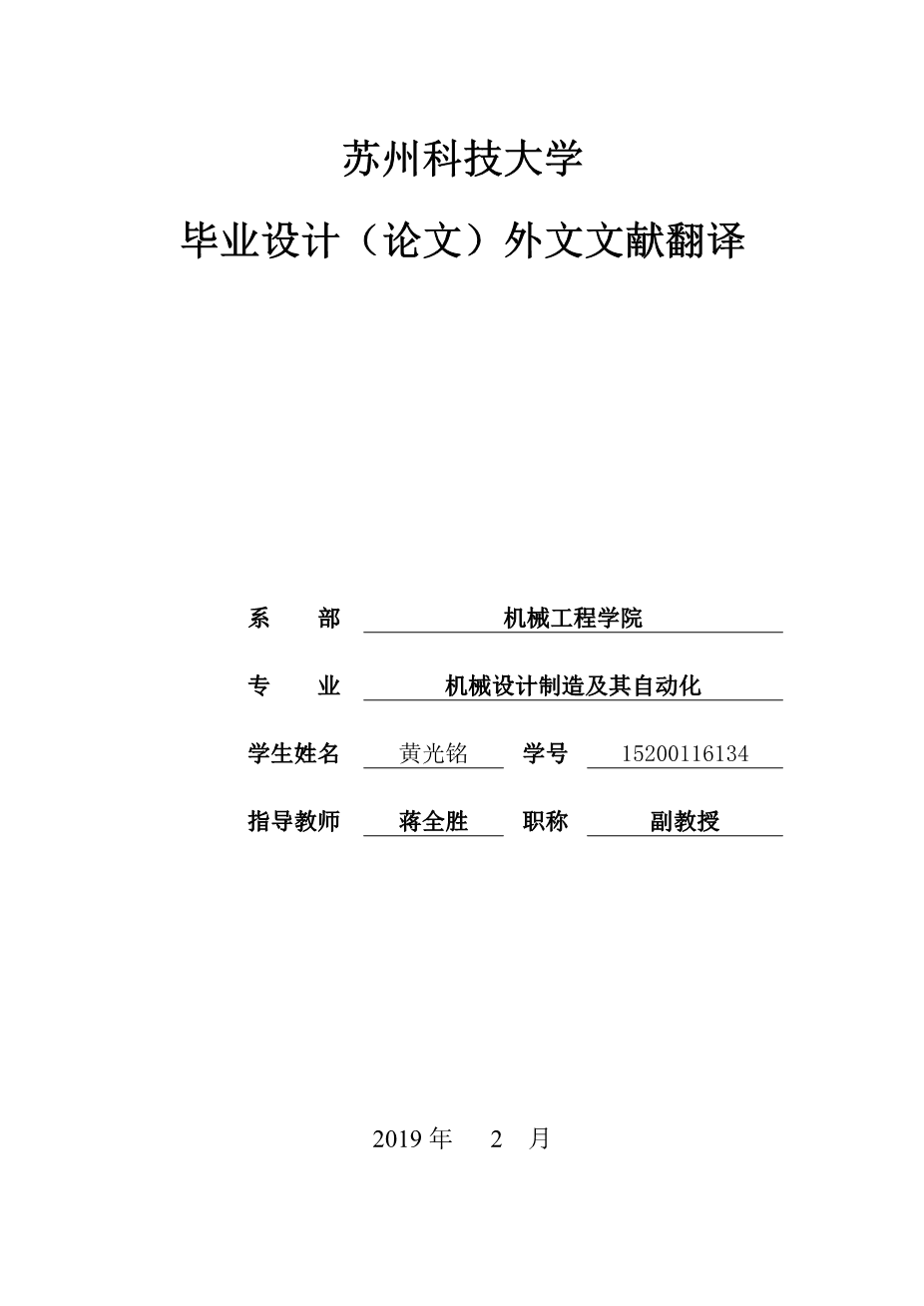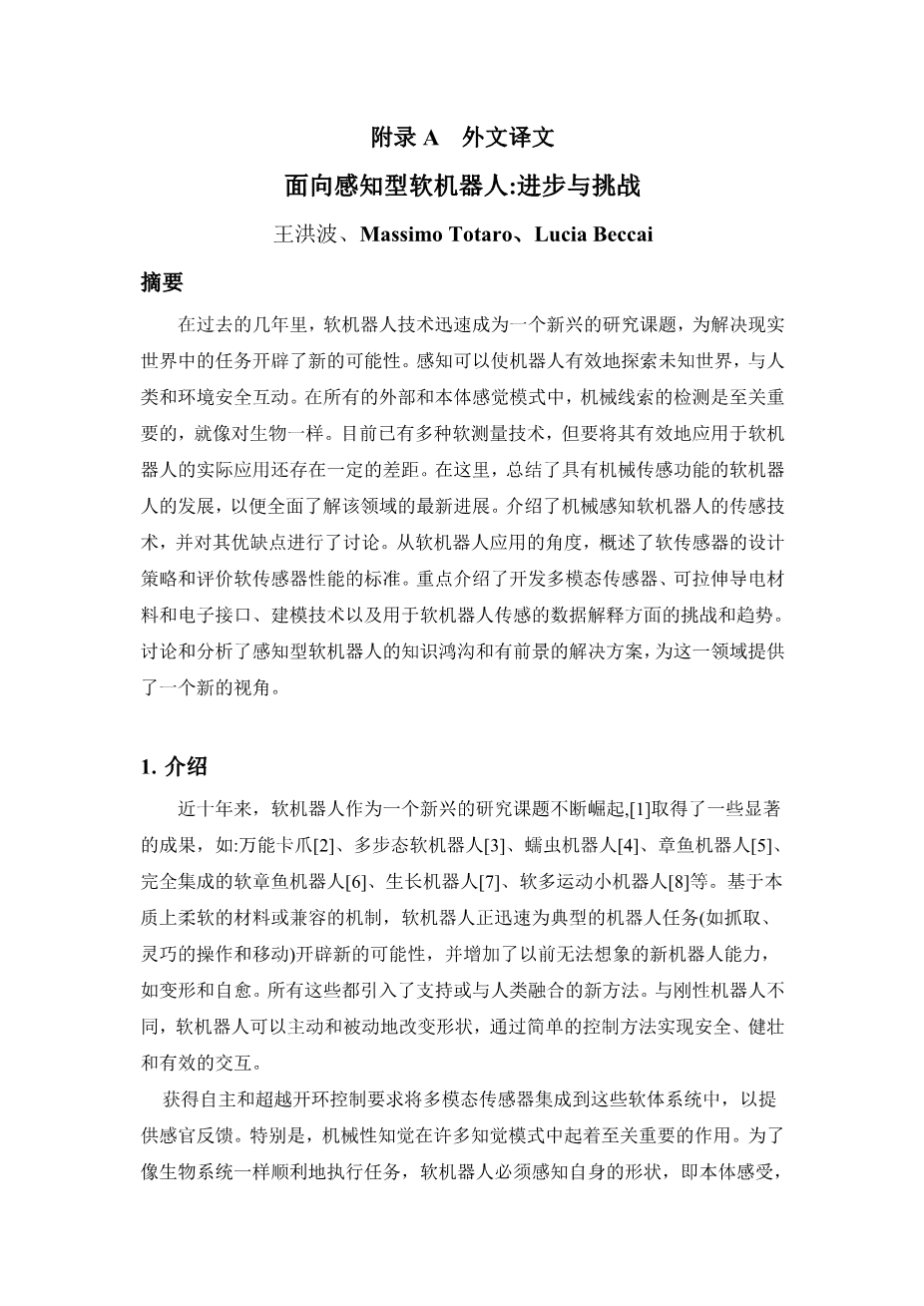外文原文
Toward Perceptive Soft Robots: Progress and Challenges
Abstract
In the past few years, soft robotics has rapidly become an emerging research topic, opening new possibilities for addressing real‐world tasks. Perception can enable robots to effectively explore the unknown world, and interact safely with humans and the environment. Among all extero‐ and proprioception modalities, the detection of mechanical cues is vital, as with living beings. A variety of soft sensing technologies are available today, but there is still a gap to effectively utilize them in soft robots for practical applications. Here, the developments in soft robots with mechanical sensing are summarized to provide a comprehensive understanding of the state of the art in this field. Promising sensing technologies for mechanically perceptive soft robots are described, categorized, and their pros and cons are discussed. Strategies for designing soft sensors and criteria to evaluate their performance are outlined from the perspective of soft robotic applications. Challenges and trends in developing multimodal sensors, stretchable conductive materials and electronic interfaces, modeling techniques, and data interpretation for soft robotic sensing are highlighted. The knowledge gap and promising solutions toward perceptive soft robots are discussed and analyzed to provide a perspective in this field.
1 Introduction
In the last decade, soft robotics has been rising up as an emerging research topic,1 with some remarkable achievements such as: universal jamming gripper,2 multigait soft robot,3 worm robot,4 octopus robot,5 fully integrated soft octobot,6 growth robot,7 soft multilocomotion microrobot,8 and so on. Building on intrinsically soft materials or compliant mechanisms, soft robots are rapidly opening new possibilities for typical robotic tasks (e.g., grasping, dexterous manipulation, and locomotion), and also adding new robotic abilities that were unthinkable before,9 like morphing and self‐healing. All this is introducing new ways of supporting or merging with humans. Unlike their rigid counterparts, soft robots can actively and passively change their shape for safe, robust, and effective interactions by simple control methods.
Obtaining autonomy and going beyond open‐loop control requires integration of multimodal sensors into these soft‐bodied systems to provide sensory feedback. In particular, mechanosensing10 plays a vital role among many perception modalities. To perform their tasks as smoothly as biological systems, soft robots must perceive their own shape, namely proprioception, and be able to feel external stimuli, namely exteroception. In biological systems, different receptors are employed to convey information on a multitude of parameters, like pressure, strain, and many others (e.g., temperature, light, sound, pain, and even chemicals). However, the hallmark of perception is the detection of both external and internal mechanical cues, which enables living organisms to thrive in the world.11 Therefore, in this work, we focus on mechanical sensing (proprioception and tactile sensing) for soft robots.
Proprioception for soft robots is much more difficult than their rigid counterparts, because they have almost infinite degrees of freedom (DOFs) and can be deformed by both internal driving and external loads. First, it is difficult to accurately predict the response of a soft robot due to certain driving condition based on modeling because of the complex behaviors (nonlinearity, hysteresis, viscoelastic effect, large strain, or deformation) of these hyperelastic materials used,12 or compliant structures.[4] A tiny mismatch between the model and the physical system could lead to a completely different result.13 Second, soft robots' shape/status/position can be passively changed by unknown external loads. Therefore, a soft robot cannot perform a task accurately with open‐loop control even in a well‐constructed environment.
Soft robots are inherently safe, and are flexible to a range of tasks (e.g., universal gripper), benefiting from passive adaptation of their elastic body to the objects they interact with. However, tactile sensing is still crucial for controlling robots in real‐world scenarios. Since soft robots can be deformed by external mechanical cues (e.g., contact and interaction forces), they could fail at some cases (e.g., locomotion over rough terrain, or in crowded scenarios) unless tactile sensing feedback is provided. Moreover, tactile sensing is essential for skilled tasks (e.g., sorting of objects based on surface
剩余内容已隐藏,支付完成后下载完整资料


英语译文共 54 页,剩余内容已隐藏,支付完成后下载完整资料
资料编号:[440257],资料为PDF文档或Word文档,PDF文档可免费转换为Word


